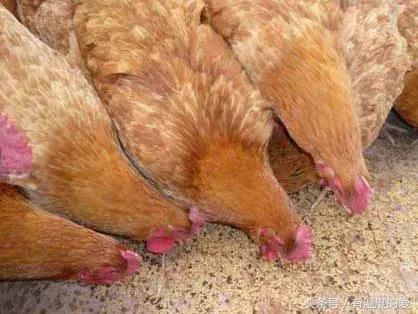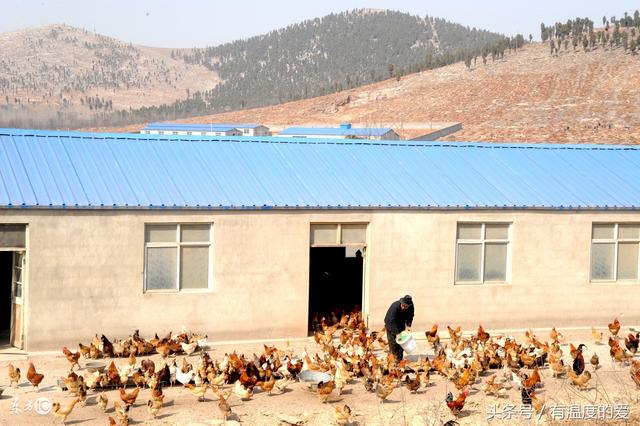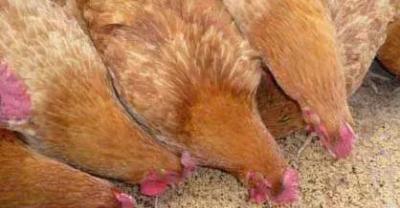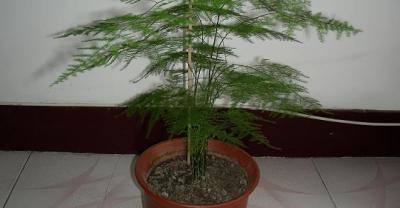Breeding methods and misunderstandings of insect chickens
Pay attention to the headline "Love with temperature", we share the technology and experience in the process of breeding, and make progress together!
Bug chicken is a kind of ecological breeding method, which is mainly fed with live fly maggots, yellow powder insects, earthworms and other worms as feed. The main breeds selected are Henan Gushi chicken, French guinea fowl, black-bone chicken, English lady chicken, hemp chicken, colorful pheasant, mountain black-skinned chicken, and so on.
Because the fresh erbium feed such as insects is rich in nutrition and fresh, it can accelerate the growth of insect chickens, enhance the disease resistance of insect chickens, improve the nutritional value of insect chickens, and effectively save feed costs. The main points of insect chicken breeding techniques are introduced as follows:

Worm and chicken rearing method
I. the method of mountain forest culture:
1. Facilities for stocking insects and chickens in woodland require that there should be isolation facilities around them, such as building fences or fences, building nestling houses, allowing chickens to move indoors and eat and drink water at night and on windy and rainy days, and have feeding and water supply equipment. water supply equipment should be distributed in the woodland.
2. The feeding of worm and egg hens should also be properly restricted during the laying period. if they are allowed to feed, there will be weight gain and fat deposition, resulting in a decrease in egg production rate. the food intake of laying hens is mainly based on the level of egg production and the size of body weight. the amount of feed increases or decreases with the increase or decrease of the laying rate, especially after the peak of egg production, which is usually reduced by 8% and 12% on the basis of free feed intake. That is, saving materials and reducing mortality, when there is the phenomenon of pecking, in addition to eliminating the causes of addiction, it should also be increased in the feed.
3. Strengthen management according to the situation of wild resources, if you do not have enough to eat during the day, words should be added to the trough at noon and evening, and supplementary feeding is needed at night. Several covered light bulbs need to be hung outside the chicken house to replenish the light at night and to lure insects to feed the chickens to prevent wild animals from getting close to the chickens.
Avoid mixed culture of different ages to prevent production from being affected by fighting, the spread of chicken disease, and production measures that are not easy to implement. To reduce accidental casualties and losses and prevent the harm of wild animals, woodlands are generally in the wild, and many wild animals may enter the orchard, such as weasels, mice, snakes, eagles, wild dogs, and so on. These wild animals may cause harm to worms and chickens of different ages.
4. health and epidemic prevention should keep up, clean up the faeces in the woodland in time, disinfect regularly, vaccinate on time, feed antibiotics and antiparasite drugs at the right time, and dispose of diseased chickens in time.
2. Ecological insect breeding method:
The ecological insect method is the human breeding method to raise insect chickens, the key of this method is how to cultivate insects, as long as there are fresh bait maggots, its breeding is much easier. The common methods of insect breeding are as follows:
1. The method of gruel breeding. Choose 3 small plots of land and sprinkle gruel on the ground. Cover it with grass, etc., and pay attention to the protection against rain and flooding. After 2 days, you can give birth to bugs, and let the chickens eat them in turn, which can meet the chicken's demand for protein feed.
2. The method of breeding insects with rice straw. Dig a rectangular pit with a width of 0.6m and a depth of 0.3m, cut the rice straw into long segments of 6~7cm, boil it in water for 1 to 2 hours, remove it and pour it into the pit, cover it with 6~7cm thick sludge (ditch mud or pond mud, etc.), garbage, etc., compact the sludge, and pour one pot of rice washing water every day. After about 8 days, it will give birth to worms. Open it and let the chickens peck at it and then cover it with sludge. Wash the rice water and continue to produce worms.
3. Bean cake insect breeding method. A small amount of bean cake (or peanut bran, etc.) is broken and fermented with bean curd dregs, then mixed with blighted grain and leaves, put into a deep pit of 20~30cm, covered with a layer of thin sludge, covered with grass and so on, and insects will grow after 6-7 days.
4. The method of breeding insects with bean curd residue. Pour the 1~2kg bean curd dregs into the jar, pour into the rice washing water, cover the mouth of the tank, give birth to worms after 5-6 days, and let the chicken feed on maggots after 3-4 days. Rearing worms in 6 cylinders in turn can meet the needs of 50 chickens.
5. The method of breeding insects with rotten grass. Dig a pit 1.5 m wide, 1.8 m long and 0.5 m deep, with a layer of straw at the bottom, a layer of tofu dregs on top, a layer of cow dung and a layer of sludge on top of the manure. Spread this until the pit is full, and finally cover with a layer of grass. The worm will be born in about 1 week.

Misunderstanding of insect and chicken breeding
Misunderstanding is that feeding live worms to chickens can make them have a better appetite and grow faster.
Take earthworms as an example, it is true that the palatability of living earthworms is better than that of feed or earthworm powder. Twisting live earthworms on the ground can attract the attention of chickens, guide chickens to peck, and increase the amount of pecking of chickens to a certain extent.
But in fact, the living earthworms were not heated and sterilized, and the parasites in the earthworms were not killed and were eaten by chickens together. There are also examples showing that when chickens eat live earthworms, the parasites in the earthworms turn to the chicken coop in the chicken's intestines, resulting in digestive tract diseases and eventually death. Experts suggest that when feeding earthworms, it is best to add earthworm powder or dried earthworms to the feed after processing.
Misunderstanding 2 "ecological bug chicken" must always eat bugs, is the authentic bug chicken.
For consumers, they must think that the more bugs they eat, the better the chicken will be, and some novice breeders must have the same misunderstanding. "Bug Chicken" does not need to feed bugs all the time. In the chicken stage, the digestive function is not complete, and the nutritional structure needed is mainly balanced. Excessive feeding of "bugs" will make its nutrition unbalanced and lead to poor quality of chicks.
Tenebrio Molitor and earthworms are high-protein fodder, and the dosage must be appropriate. Generally, "bugs" should be properly added to the feed for 1-3 months. Too much insect feed will cause stress reaction in chickens due to nutritional imbalance. And for breeders, to increase the feeding amount of Tenebrio Molitor, that is, to increase the feed cost of raising chickens, for their own economic interests, the use of "insect" feeding is also an undesirable breeding model. Experts believe that breeding "ecological insect chickens" should improve the quality of chickens as far as possible on the premise of ensuring the interests of both consumers and farmers, rather than raising them blindly.
Misunderstanding three "ecological chicken" breeding should start from the "doll", the chick stage begins to breed.
The chick is the initial growth stage of the chicken, because the physical development of the chick is in the developmental stage, the ability to regulate and control the temperature and nutrition is very weak, and the chick is easy to die because it does not adapt to the ambient temperature. resulting in a large price of survival rate, the economic benefits of the chicken farm are also greatly affected. In order to improve the survival rate and the quality of the chicks, and let the chicks reach the standard, indoor breeding or shed breeding should be adopted in the brooding stage.

- Prev

Skin rot of giant salamander in aquaculture
Skin rot is the most harmful disease to the artificial culture of giant salamander, and it spreads quickly. Because the water quality of artificial molt is easy to be polluted, the water often multiplies in large quantities.
- Next

The culture method of water ghost banana and the introduction of flower language
The water ghost banana likes to grow in the wet environment, it does not have the high request to the soil, but prefers the sandy soil, if it is potted, then you can choose rotten leaves.
Related
- On the eggshell is a badge full of pride. British Poultry Egg Market and Consumer observation
- British study: 72% of Britons are willing to buy native eggs raised by insects
- Guidelines for friendly egg production revised the increase of space in chicken sheds can not be forced to change feathers and lay eggs.
- Risk of delay in customs clearance Australia suspends lobster exports to China
- Pig semen-the Vector of virus Transmission (4)
- Pig semen-the Vector of virus Transmission (3)
- Five common causes of difficult control of classical swine fever in clinic and their countermeasures
- Foot-and-mouth disease is the most effective way to prevent it!
- PED is the number one killer of piglets and has to be guarded against in autumn and winter.
- What is "yellow fat pig"? Have you ever heard the pig collector talk about "yellow fat pig"?

